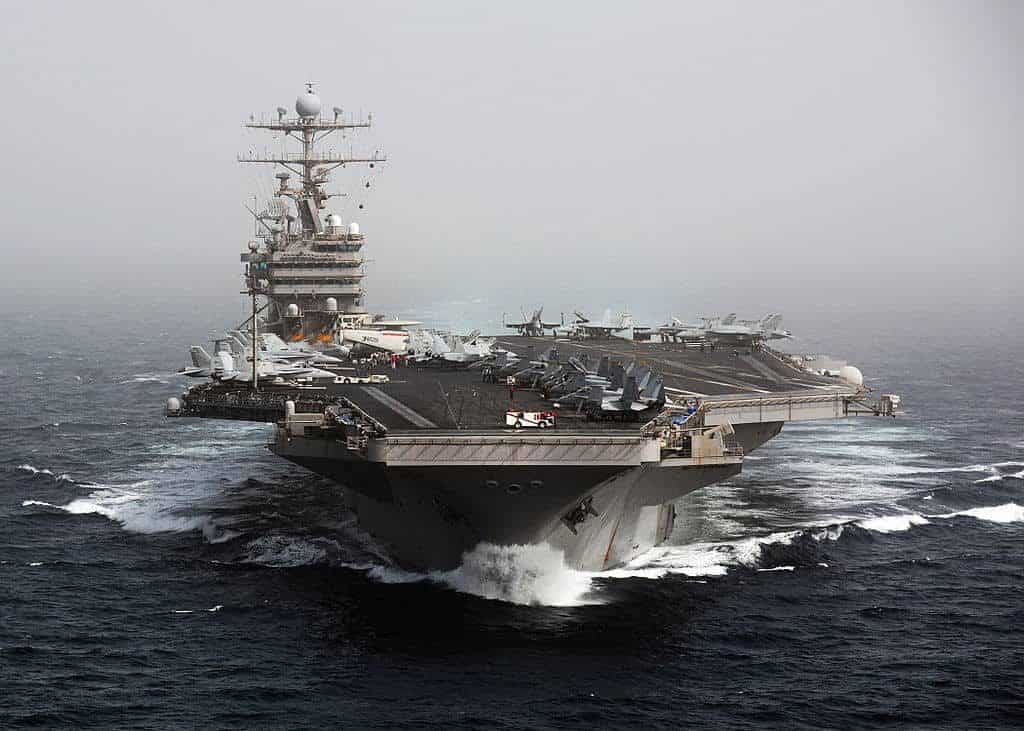Since Donald Trump reneged on John Kerry’s July 2015 nuclear agreement with Iran, the United States is committed to strangle the mullahs’ regime economically by blocking its oil exports.
The objective is to deprive Persia of any current or future regional pre-eminence, by forcing it to give up not only any uranium enrichment (a mandatory step for anyone who wants to build a nuclear weapon), but also the influence it has gained over the past twenty years on four Arab capitals – Beirut, Baghdad, Damascus and Sanaa.
In an attempt to ease this economic strangulation, Iran has chosen to attack their weak link in the Middle East – Saudi Arabia. This Sunni monarchy, a strategic ally of the United States since 1945, currently has three weaknesses, in addition to the mediocrity of its armed forces: it is not much loved by Western public opinion, it has unwisely engaged in a war against the Houthis (Shia mountain people) of northern Yemen – a war it is unable to win, and, at home, it has a Shia minority that feels despised by the government and lives in the oil regions.
The Iranian armed forces follow a hybrid war strategy. This is not a Napoleonic war. No declaration of war, no frontal battles, no diplomatic rules of the game. Any means are justified to achieve the strategic goal set by the Guide of the Revolution, Ayatollah Khamenei, but there is no question of making them known to the enemy or advertising them for internal propaganda purposes.
As in cyber warfare, the aim is to make it very difficult to attribute hostile acts. The bombing by drones on 14 September of two major oil installations in Saudi Arabia – the giant Abqaiq refinery and the Khurais field of operation – forced the Kingdom to halve its production and caused a 15 per cent increase in the international price of oil per barrel. It is a perfect example of hybrid, asymmetrical, graduated warfare.
It is the Houthis (friends of Tehran) who are claiming responsibility for the attack, even though they are located more than 800 km from the targets.
Cheap and anonymous drones are used against a power with state-of-the-art interceptor aircraft.
They provoke the enemy, without attacking them directly. They create an economic shock (a spike in crude oil prices and postponement of the Aramco market listing) which forces the enemy in Washington to reflect. If it wanted to retaliate with strikes against Iran, the White House would need irrefutable evidence, because Tehran denies any responsibility.
Mindful of the false evidence that US Secretary of State Colin Powell presented against Iraq to the UN Security Council in February 2003, American public opinion is not prepared to be satisfied with a mere bundle of presumptions.
There are hawks, like Republican Senator Graham, who are calling for strikes against Iran. But the president is very reluctant to go to war. First, he was never intellectually a neo-conservative; he was always suspicious of people who claimed to be able to impose democracy by force. He understands that overthrowing a regime is one thing, managing the aftermath is quite another.
Donald Trump, advised by the Chief of the Defence Staff, General Joseph Dunford (who is anything but a warmonger), understands that, in this crisis, it would be very difficult for him to control any escalation.
Of course, it would be easy for the US Air Force to carry out a punitive bombardment on one or other of Iran’s military installations. But it would be an act of war, against which the Iranians would have no option but to retaliate.
The easiest target for them would be American soldiers based in Iraq. Trump would then find himself trapped, having promised, in the election campaign, to put an end to American adventures in the land of Islam.
A new war in Iraq would torpedo his chances of re-election in November 2020. It is therefore likely that – if there is an American response – it will also be difficult to trace. Maybe a cyber attack paralysing Iran’s military communications networks.
Who knows how many months it will take for Tehran and Washington to agree on the only deal that everyone knows is acceptable to both sides: Persia will never use nuclear weapons again, but it will retain its influence on the Shiite axis in the Middle East.
This article was first published in Le Figaro.





